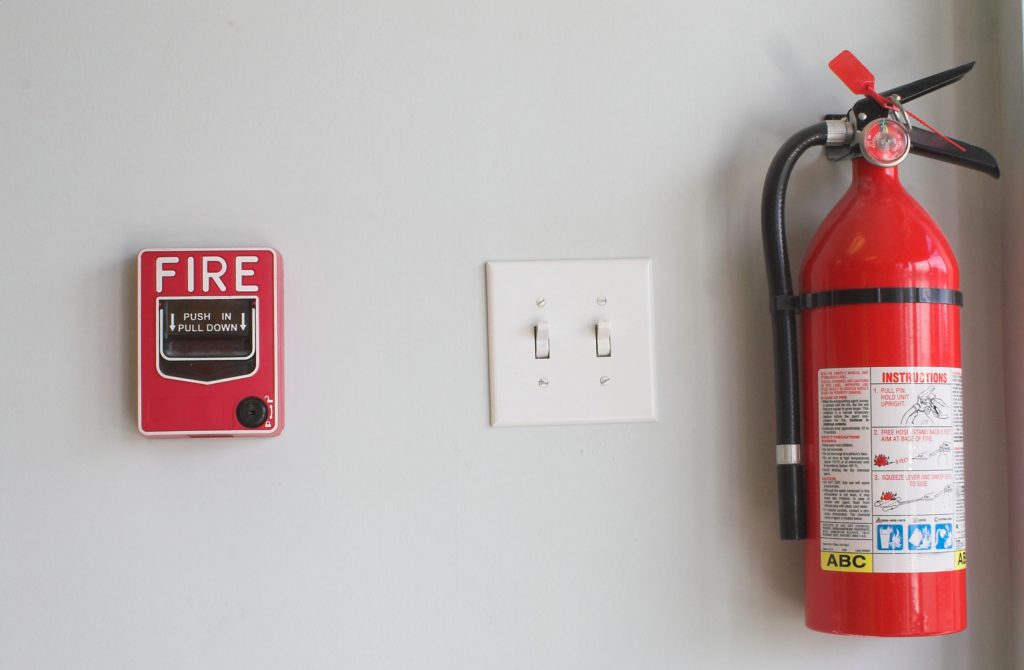Power outages are inevitable. When at home, the solution to a sudden power outage is often a stash of emergency flashlights or candles or maybe a small generator. Commercial power outages are a different story and present their own challenges. Commercial properties have safety regulations, which include emergency lighting requirements. These NFPA requirements are designed to ensure that occupants of commercial properties can safely navigate to exits. The professionals at APFE Corporation can help ensure your property complies with these regulations and is safely designed for emergency lighting plans.
Why is an Emergency Light Inspection Important?
The National Fire Protection Association was born out of necessity with the invention of electricity and fire suppression sprinklers. As technology continued to advance, so too did the legal requirements to install these systems. What began with a plumbing solution to fire suppressants has evolved into electrical and computer-based technology in potentially dangerous situations.
The NFPA provides emergency exit light inspection requirements for businesses to ensure the safety of their commercial building’s occupants. Inspecting emergency lighting systems’ operational efficacy keeps your property, employees, and customers safe when your power unexpectedly goes out by providing clear lighted pathways to emergency exits. The emergency lighting system and proper inspection can assure your insurance company of your business’ commitment to safety. Emergency lighting systems are also often required by law or in accordance with building codes, which means your emergency lights’ operational status is vital for safety and compliance reasons.

OSHA (Occupational Safety and Health Administration) also has requirements relative to emergency lighting. “Each exit route must be adequately lighted so that employees can see along the exit route, each exit must be clearly visible and marked by a sign reading “Exit,” per OSHA guidelines. Exit signs must also be illuminated and be distinctive in color in plainly legible letters
How Does Emergency Lighting Work?
Emergency lighting systems can be installed in a few ways. One is to set up the building with an emergency generator. In this scenario, an automatic transfer switch would provide backup power in the event of a power outage. Another method is to have separate emergency light units with already charged batteries that work independently from the building’s main power supply. NFPA requires lighting to stairs, hallways, passageways, aisles, and corridors that lead to an exit.

What Takes Place When Inspecting an Emergency Lighting System?
Emergency lighting inspection requirements include monthly inspections to meet the standards of NFPA Life Safety Code 101. The testing for the lighting system inspection can be either manual, self-tested, or computer tested. For the manual review, you should manually test the emergency lights for thirty seconds every month to ensure they are operational. This is usually done by using the manufacturer button, which manually disconnects the main power supply.

For the self-test inspection, the units can use indicator lights that notify you if an emergency light is not working properly. The presence of an indicator light should be checked every thirty days.
In a computer-based method, the units do not need to be visually inspected every thirty days. The computer will notify you of an issue as it occurs. In addition to the monthly inspections, an annual test of the emergency lighting system is also required by NFPA. You should keep records of your monthly inspections. This is best done by using an emergency lighting inspection form.
What Else Is Required for Emergency Lighting?
NFPA also requires signs that mark the main exterior doors that may not be otherwise identified as possible emergency exits. The markings need to be visible from any direction of the exit access and need to be illuminated. The illumination of the exit markings should be confirmed with a visual inspection every thirty days. These lights should be included with the emergency light units. Local state or municipal laws may also have regulations, and industrial emergency codes that apply to exits markings and building inspection codes may also have requirements for emergency lighting. Be sure to check your state and municipal requirements.

Final Thoughts
The routine inspection of your emergency lighting system will help safeguard your property’s occupants and comply with national and local safety codes. Emergency lights should be designed so that no building area is without illumination to a safe exit. Click here for other ways to protect your property from fire.
For more information about the importance of fire sprinkler inspections or to schedule an inspection for your company, get in touch with the experts at APFE Corp. today by calling 1-866-353-2790 or filling out a quote online. We look forward to assisting you and answering any questions you may have.




